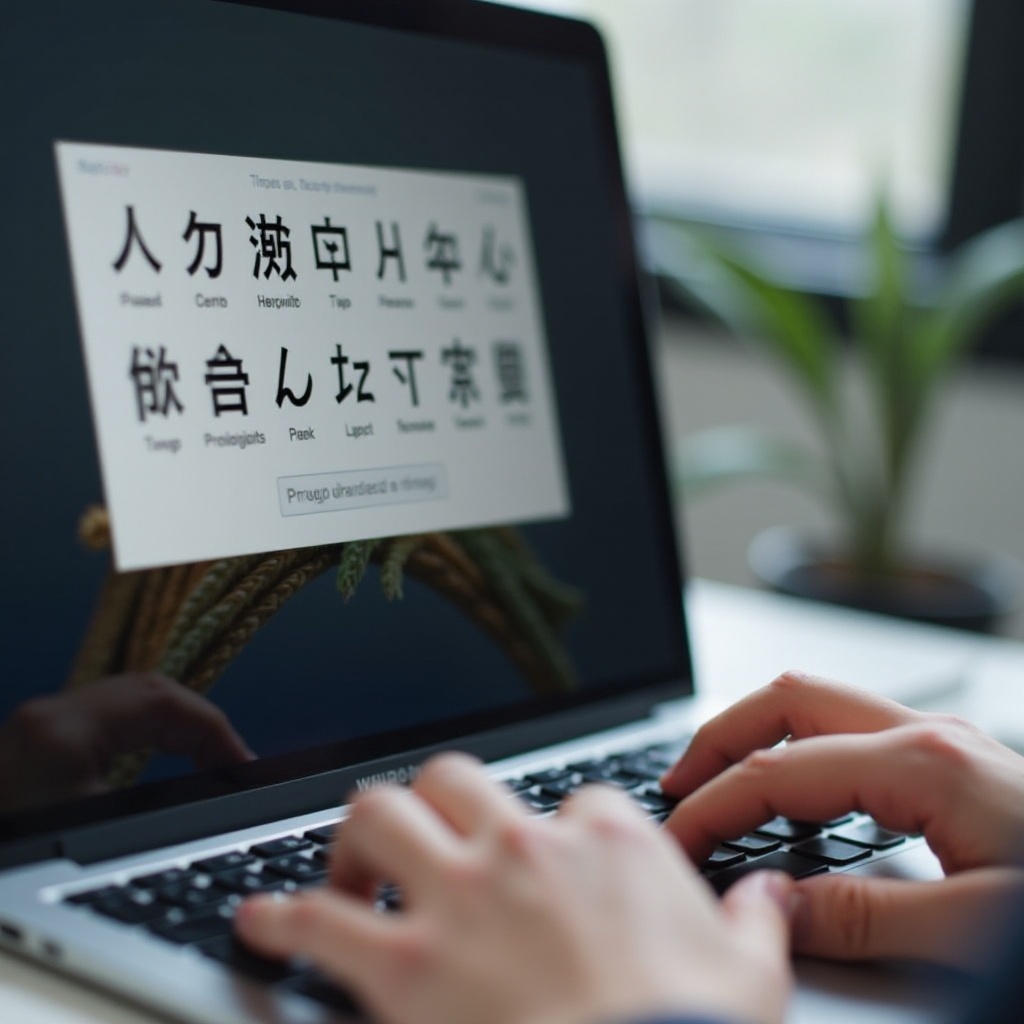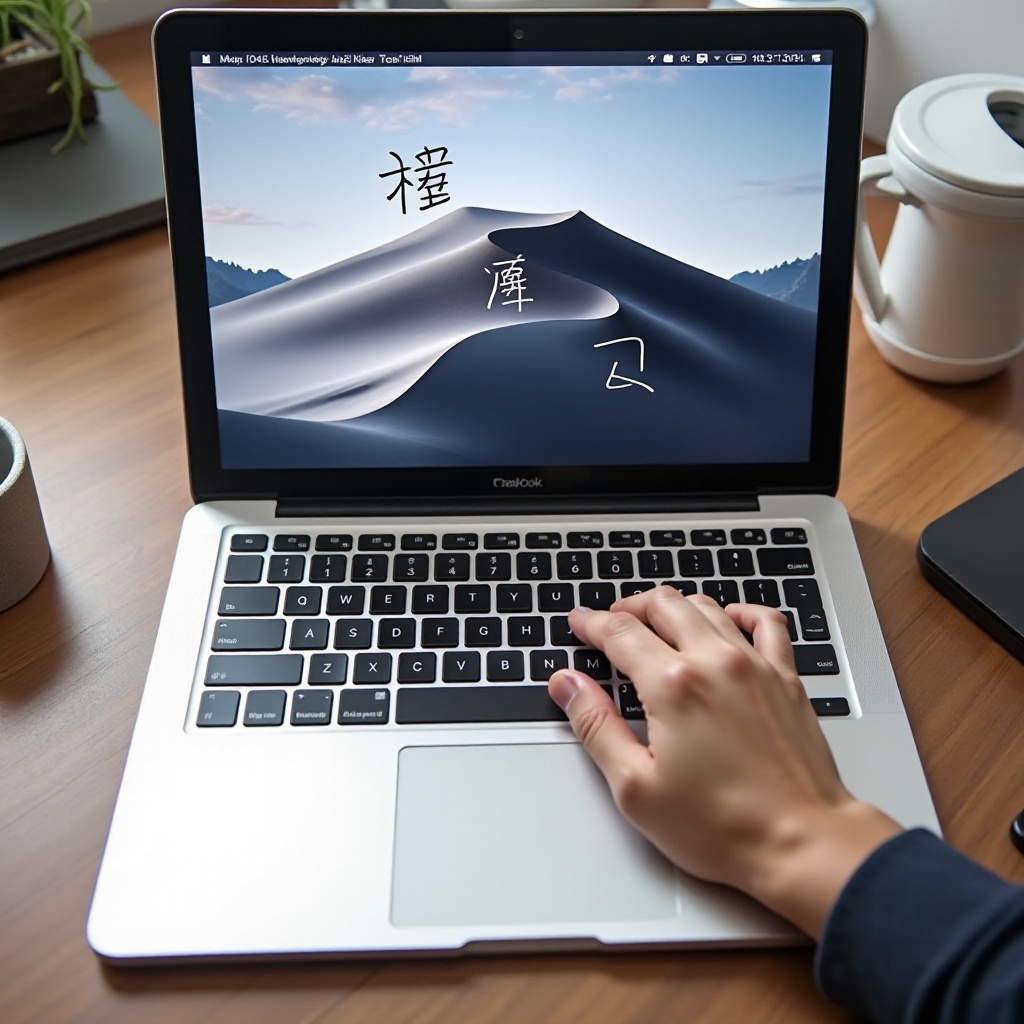Introduction
MacBooks have become a vital tool for professionals and students worldwide due to their intuitive design and powerful features. For those who need to input Chinese characters, whether for work, study, or personal use, MacBooks offer a seamless and effective solution. This guide will explore how to set up and use Chinese language input methods on your MacBook, ensuring efficient and accurate typing.

Setting Up Chinese Language Input on Your MacBook
Before diving into the specifics of typing Chinese characters, you need to set up the Chinese language input on your MacBook. Follow these steps to configure your system:
- Click on the Apple logo in the top-left corner of your screen and select ‘System Preferences’.
- In the System Preferences window, click on ‘Keyboard’.
- Navigate to the ‘Input Sources’ tab.
- Click on the ‘+’ sign at the bottom left of the Input Sources list.
- From the language list, select ‘Chinese’ and then choose your preferred input method, such as ‘Pinyin’ or ‘Handwriting’.
- Click ‘Add’ to enable the input method.
Now that your MacBook is ready to input Chinese characters, let’s look at the different methods available and how to use them effectively.
Choosing the Right Input Method: Pinyin vs. Handwriting
Selecting the appropriate input method depends largely on your personal preference and familiarity. Here’s a brief comparison to help you choose:
Pinyin
- Based on the Romanization of Chinese characters.
- Ideal for those familiar with Pinyin, which uses the Latin alphabet to transcribe Mandarin sounds.
- Faster for users with solid typing skills in Pinyin.
Handwriting
- Allows you to draw characters directly on your trackpad.
- Useful for those who are more comfortable with writing characters manually.
- Great for inputting less common or complex characters that are harder to type.
With your preferred method selected, let’s explore how to use each input method in detail.
Typing Chinese Characters Using the Pinyin Input Method
The Pinyin input method is popular due to its simplicity and ease of use. Follow these steps to type Chinese characters using Pinyin:
- Ensure you have added ‘Pinyin’ as an input source by following the setup instructions above.
- To switch to the Pinyin input method, you can either use the language icon in the menu bar or press
Control + Spaceto cycle through your input methods. - Once Pinyin is activated, simply type the Pinyin pronunciation of the Chinese character using your keyboard. For example, to type ‘我’ (I/me), you would type ‘wo’.
- A list of characters will appear. Use the arrow keys to navigate through the options or type the number corresponding to the desired character to select it.
- Continue typing the Pinyin and selecting characters as needed.
This method is efficient for users familiar with Pinyin, enabling fast and accurate Chinese character input.

Using the Handwriting Input Method
For those who prefer the handwriting method, here’s how to use it:
- Ensure the ‘Handwriting’ input source is added through the setup steps.
- Switch to the Handwriting input method from the language icon or use the
Control + Spaceshortcut. - With the Handwriting method active, you can write characters directly on your trackpad using your finger.
- Draw each stroke carefully, and the system will recognize and display possible character matches.
- Select the correct character from the list of suggestions.
Handwriting is particularly useful for characters that are difficult to remember or type using the Pinyin method, providing an alternative way to input complex characters.

Advanced Tips and Customization
Once you are comfortable with the basics, consider these advanced tips for an enhanced Chinese typing experience:
- Custom Shortcuts: Create keyboard shortcuts for frequently used characters or phrases. This can be done in the ‘Text’ tab within the ‘Keyboard’ preferences.
- Candidate Window Customization: Adjust settings for the candidate window (where character options appear) under ‘Input Source’ settings.
- Learning Mode: Enable learning modes where the system remembers your choices, which helps in predicting the characters you intend to type based on your previous inputs.
- Use Emoji and Symbols: Mac offers a wide array of emojis and symbols that can be input along with characters. Use the
Control + Command + Spaceshortcut to open the emoji and symbol viewer.
By leveraging these tips, you can fine-tune your MacBook to better suit your Chinese typing habits.
Common Issues and Troubleshooting
Despite the streamlined input methods, you may encounter occasional issues. Here are some common problems and solutions:
- Input Method Not Switching: Ensure you’ve added multiple input methods and use
Control + Spaceto toggle between them. Restarting your MacBook can also resolve this issue. - Characters Not Displaying Correctly: This may be due to font compatibility. Ensure you are using a font that supports Chinese characters. If the problem persists, check for system updates.
- Slow Character Recognition: Clean your trackpad and make sure it is responsive. Reducing background applications can also improve performance.
Addressing these issues promptly ensures a smooth typing experience.
Conclusion
Entering Chinese characters on your MacBook can be straightforward and efficient with the right setup and methods. Whether you prefer the Pinyin input for its speed or the handwriting method for its intuitive process, MacBook offers a versatile platform to meet your needs. By following this guide, you are now equipped to communicate effortlessly in Chinese.
Frequently Asked Questions
How do I switch between languages on my MacBook?
Use the `Control + Space` keyboard shortcut to cycle through different input methods. Alternatively, click on the language icon in the menu bar to select your desired input method.
Can I use Chinese input methods in all applications on my MacBook?
Yes, Chinese input methods can be used across all applications on your MacBook, as long as the application supports text input.
What should I do if the Chinese characters are not displaying correctly?
Ensure the font you are using supports Chinese characters. If the issue persists, check for any system updates or consider restarting your MacBook.